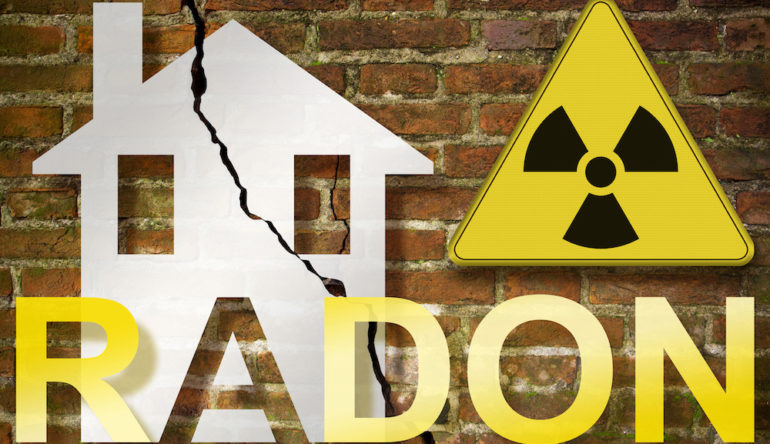Radon is a naturally occurring, colorless, odorless gas that is the second-leading cause of lung cancer. The gas is everywhere, but it can rise to dangerous levels in your home. How do you protect yourself and your family from radon gas?
Stealthy visitor
As rock decays, the uranium and thorium it contains break down into various short-lived elements and lead. Radon gas is the by-product of that process. Because the ground emits radon, the gas is present in the outdoors, but those concentrations are not harmful. Higher concentrations of radon gas, however, also enter buildings through seams between building materials, foundation cracks, plumbing passageways and porous concrete blocks in the foundation. When inhaled by occupants over time, this gas can cause pulmonary health problems. Radon gas is the leading cause of lung cancer in non-smokers.
Should you have your home tested?
The Centers for Disease Control recommends having your home tested for radon gas. This testing is a routine part of pre-closing home inspections. If you are about to sell your home, you might want to test for radon gas before going on the market. You should also test when you renovate, particularly if the renovations will result in your family spending more time in your home’s basement or the lowest parts of the house.
You can test for radon gas with a home kit, which you can purchase online or at a home improvement store, for a short period or over 90 days. A longer-term test will provide a more comprehensive picture.
If your home test indicates radon levels high enough to be of concern, have a professional verify the results. The federal Environmental Protection Agency provides links to state and regional authorities that provide professional help with testing and any mitigation repairs needed. (The EPA also has created a map of the U.S. that shows exposure risk levels.)
Radon mitigation steps
If the levels of radon gas in your home are too high, a licensed mitigation professional can:
- Relieve built-up radon gas beneath your home’s slab.
- Depressurize under crawl spaces.
- Seal openings from the foundation into the house, such as plumbing pathways.
- Install fans to vent the gas.
Related – Foundation Problems: When to Worry


